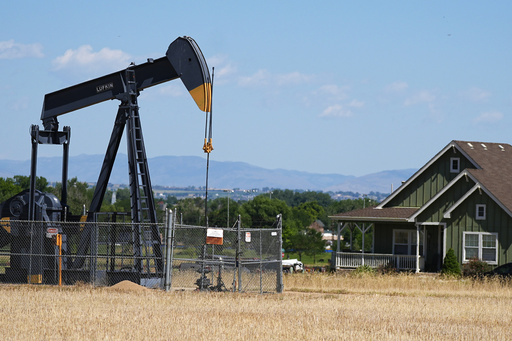The United States economy expanded by a healthy 3% annual rate last quarter, driven by robust consumer spending and business investment, as per an upgraded assessment by the government on Thursday. Initially estimated at 2.8%, the country’s gross domestic product (GDP) saw significant growth from April to June, following a sluggish 1.4% rate in the first quarter of 2024. Consumer spending, which makes up approximately 70% of the U.S. economic activity, increased by a 2.9% annual rate in the last quarter, up from the initial 2.3% estimate. Business investment also soared at a rate of 7.5%, with equipment investment leading the way with a 10.8% surge.
Despite facing continued high interest rates, the economy displayed resilience in the wake of Thursday’s report. The economy’s condition is a pivotal concern for voters as the November presidential election approaches, with many Americans grappling with the impact of high prices, despite inflation decreasing from a four-decade high in mid-2022. Consumer confidence in the economy has seen a recent uptick, as indicated by measures from organizations like the Conference Board and the University of Michigan.
The latest GDP estimate revealed a slight easing of inflation, hovering just above the Federal Reserve’s 2% target. The personal consumption expenditures index (PCE), the central bank’s preferred inflation measure, rose by 2.5% annually in the last quarter, marking a decrease from the 3.4% recorded in the first quarter. Excluding volatile food and energy prices, core PCE inflation also saw a decline from 3.2% to 2.7% between January and March.
The category of GDP that gauges the economy’s fundamental strength exhibited a robust 2.9% annual growth rate, up from 2.6% in the previous quarter, excluding volatile factors like exports, inventories, and government spending. Despite high borrowing costs resulting from 11 interest rate hikes in 2022 and 2023, the economy has managed to grow consistently and sustain job growth. With inflation hovering just above the 2% target, the Fed is anticipated to begin lowering its benchmark interest rate at its upcoming mid-September meeting to support the economy.
The central bank’s focus has shifted towards maintaining a healthy job market as opposed to combatting inflation, indicated by a rise in the unemployment rate to 4.3% over four consecutive months. Although job openings and hiring rates have dipped, they persist at relatively strong levels. The Commerce Department’s second GDP growth estimate for the April-June quarter will be followed by a final assessment next month.


